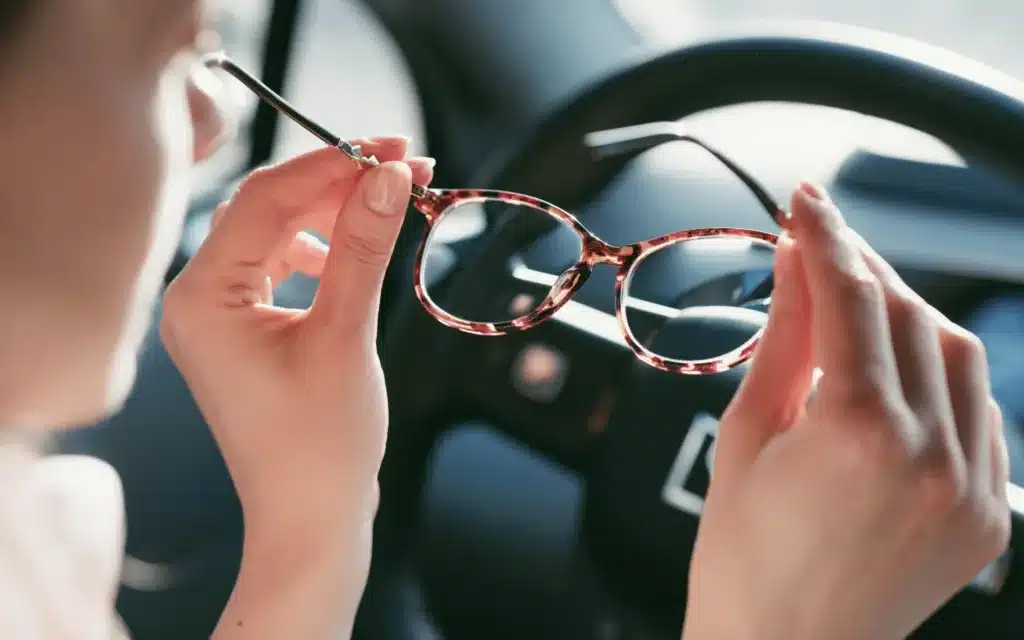Words
Published
Choosing the perfect pair of glasses isn’t just about finding frames that suit your face. The real magic happens when we match your lenses to how you actually live your life. Every day, you face unique visual challenges that deserve personalised solutions.
Understanding your visual world
Modern life demands more from our eyes than ever before. Whether you’re analysing spreadsheets, navigating busy streets, or enjoying a good book, each activity requires different visual skills. The question isn’t just “Can you see clearly?” but “How can we optimise your vision for everything you do?”

Progressive lens technology has evolved dramatically. Today’s lenses can be tailored to match your dominant eye positioning, frame choice, and preferred reading distance. This customisation helps reduce peripheral distortion and improves adaptation time.
But here’s the key insight: one pair may not solve all your vision requirements.
The digital challenge
If you’re like most people, digital screens dominate your visual landscape. Computer progressive lenses are specifically optimised for intermediate and near vision, making them ideal for prolonged screen work. Modern LED displays emit significantly more blue spectrum light than older technologies, contributing to what eye care professionals recognise as computer vision syndrome.
Blue light filtering has become essential rather than optional. Quality blue-blocking treatments reduce digital eyestrain while protecting your eyes from potential long-term damage.
Lifestyle-specific solutions
For outdoor enthusiasts: Distance-optimised progressives provide clarity for driving and outdoor activities. Photochromic lenses offer versatility for frequent indoor-outdoor transitions, while polarised lenses excel at cutting reflected glare – though it’s worth noting that they’re not ideal for pilots reading LCD instruments or skiers who rely on glare to assess terrain.

For computer professionals: Intermediate and near-optimised designs reduce eyestrain during prolonged screen use. Anti-reflective treatments provide clearer vision while making lenses more attractive and easier to clean.
For active lifestyles: Sport lenses feature lower intermediate areas for wider peripheral distance vision. Trivex and polycarbonate materials offer lightweight impact protection, while high-index lenses reduce thickness in stronger prescriptions.

The complete package approach
Selecting the right lens involves more than optical design. Lens materials affect weight, durability, and clarity. Surface treatments like anti-reflective coatings, blue light filtering, and scratch resistance aren’t luxuries – they’re practical solutions to real-world challenges.
Protective features like photochromic technology and flash mirror coatings enhance visual comfort in varying conditions, from extreme coastal glare to everyday urban environments.
Starting the conversation
The most effective way to begin selecting ideal lenses is surprisingly simple. Your eye care professional should ask: “How will you use your glasses?”
This question reveals your expectations and directs appropriate recommendations. Be specific about your daily activities:
- How many hours do you spend at computers?
- Do you frequently drive at night?
- What hobbies require detailed close work?
- How much time do you spend outdoors?
The personalisation advantage
Today’s freeform progressive technology accounts for your individual visual needs in remarkable ways. By considering your dominant eye positioning, frame geometry, and typical viewing distances, these lenses create a uniquely tailored visual experience.

This isn’t about selling you the most expensive option – it’s about matching technology to your actual needs. A computer programmer has different visual demands than a landscape architect. A retiree has different priorities than a young parent juggling work and family.
Making informed decisions
Premium features should solve actual problems you experience, not theoretical issues you might encounter. If you spend eight hours daily at a computer, blue light protection becomes essential. If you rarely drive at night, specialised night-driving lenses may not provide meaningful benefit.
Your eye care professional can guide you through options that make practical sense for your lifestyle and budget. Quality means selecting solutions that genuinely improve your daily visual experience.
The bottom line
Your glasses should work as hard as you do. Modern lens technology offers remarkable customisation possibilities – but only when we understand what you’re trying to achieve.
So when your eye care professional asks, “How will you use your glasses?” – that’s your opportunity to ensure your new lenses truly support the life you want to live.

